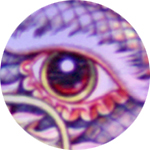Now why anybody would want to shoot a hawk, I don't know - usually I'm pretty stoked to see one circling high overhead....
Anyway - looking for some input from you Baduanjin practitioners out there regarding the "draw the bow" movement (2nd movement in the form usually) - how do you coordinate your breath? Do you inhale as you "draw the bow" or do you inhale first and then exhale as you draw the bow?
I've experimented a bit with both ways and found different results - but I'd like to hear from you folks out there what your experiences have been and if you have a rationale as to why you breathe in a particular way.
Here's a youtube link that shows the first two movements of the form - it's the second one... btw does anybody know who this chap is?
Anyone? Anyone? Bueller???
One,
herb ox




 Reply With Quote
Reply With Quote
 Anyhow, my usual qigong routine, while performed standing is more of a nei dan routine and I was feeling the need for more external, more physical routine to keep the body lithe and strong. I learned Baduanjin from one of the Shaolin monks, though my memory may need some help - it was either Shi Decheng or Shi Xinghao back around 2004 or 2005 - Gene was there so he might remember better than me.
Anyhow, my usual qigong routine, while performed standing is more of a nei dan routine and I was feeling the need for more external, more physical routine to keep the body lithe and strong. I learned Baduanjin from one of the Shaolin monks, though my memory may need some help - it was either Shi Decheng or Shi Xinghao back around 2004 or 2005 - Gene was there so he might remember better than me.

 , or whatever, I practice it more softly. That's what I like most about the brocade - you can modify it to fit your daily needs.
, or whatever, I practice it more softly. That's what I like most about the brocade - you can modify it to fit your daily needs. 
